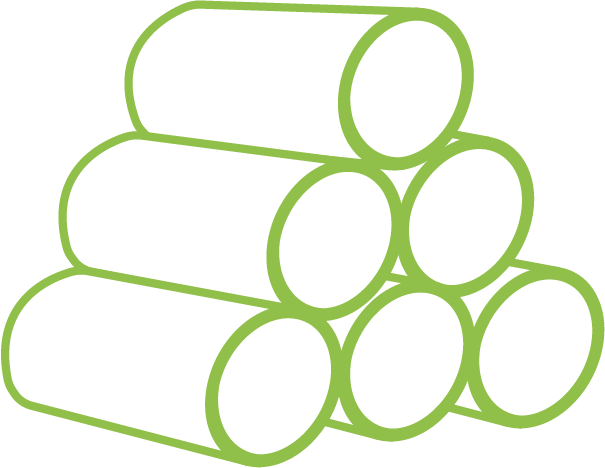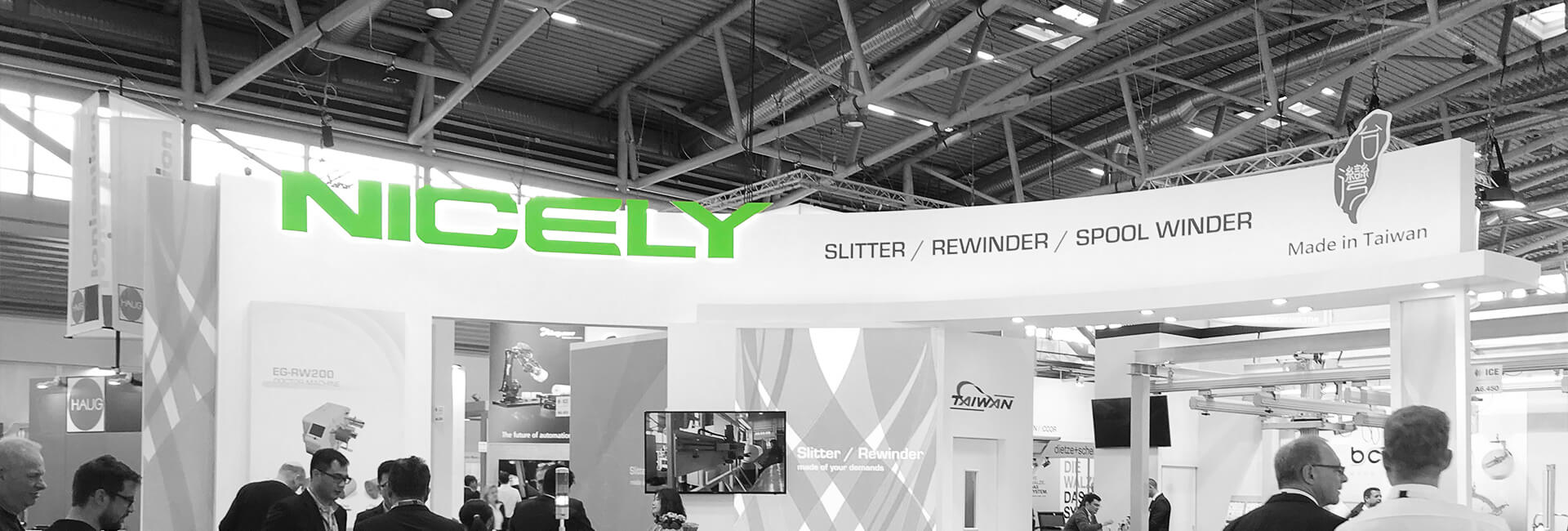Upgrade Your Nonwoven Production with Advanced Slitting Machines
Customer Care 2024-09-02Are nonwoven fabric manufacturers struggling to keep up with the demands of a rapidly changing market? Challenges such as meeting quality standards, maximizing production output, and adapting to new materials are common. The solution to these challenges lies in investing in a state-of-the-art Nonwoven Fabric Slitter and Rewinder. This specialized equipment is designed to precisely cut wide rolls of nonwoven material into narrower widths, ensuring consistency, efficiency, and quality. For those with existing equipment, retrofitting options provide a cost-effective way to upgrade without a complete overhaul.
Deep Dive into Slitting and Rewinding
Inline master winder, slitting process, and rewinding are interconnected processes fundamental to the nonwoven fabric manufacturing industry. Slitting involves the precise cutting of a wide roll of nonwoven material into narrower widths and requires a comprehensive understanding of material tensile properties, tension control, speed consistency, and slitting methods.
For instance, shear cutting method is commonly used for nonwoven fabrics to enhance cutting cleanliness and efficiency. Additionally, features such as Auto Knife Positioning with dust suction systems are considered to further optimize the slitting process.
 35 sets of pneumatic cutters with auto-positioning capabilities are distributed across a 3600mm wide nonwoven slitter rewinder
35 sets of pneumatic cutters with auto-positioning capabilities are distributed across a 3600mm wide nonwoven slitter rewinder
Once the material is slit, it is then rewound onto new cores. Rewinding is a critical process that ensures the slit material is wound evenly and tightly, preventing wrinkles, creases, and damage. The tension control during rewinding is particularly important as it directly affects the quality of the final product. Too much tension can cause the material to stretch or break, while too little tension can lead to loose windings.
The Role of Nonwoven Material Characteristics
The design for slitting and rewinding varies depending on the tensile properties of the nonwoven fabric being processed. For instance, needle-punched nonwovens, known for their strength and durability, may require higher tension settings. In contrast, meltblown nonwovens, often used in filtration applications, are delicate and may require relatively gentle handling. Below is a simple chart to express the idea :
|
Process Methods (Nonwovens) |
Tension required | Deformability | Industry Applications |
|---|---|---|---|
| Needle punched | High | Low | Carpet backing, filtration materials, geotextiles. |
| Meltblown | Low | High | Filters, mask. |
| Spunbond | High | Medium | Agriculture, medical, packaging. |
| Spunlace | Medium | High | Disposable products, medical dressing. |
| Wetlaid | Low | Low | Filtration materials. |
| Wetlace | Medium | High | Composite materials, high-strength applications |
|
Multi-stage process (SMS, SMMS, SSMMS) |
High | Medium | Medical hygiene products, protective clothing, filtration materials |
Key Components and Features of Nonwoven Fabric Processing Line
A state-of-the-art nonwoven fabric processing line is a sophisticated piece of machinery consisting of several key sections working in harmony.
1. Core Components
Inline Master Winder
- Master Winder : This inline winder is connected to the upstream machinery where the nonwoven fabric web is produced. It continuously winds the ongoing web into jumbo nonwoven rolls, also known as master rolls, without interruption, ensuring a seamless production process. ( EG-SR series Inline Master Winder)
Off-line Slitter Rewinder
- Unwinding Stand : Handles the raw material roll with features like auxiliary belt-assisted unwinding for tension sensitive material.
- Slitting Unit : Equipped with pneumatic cutters for accurate and efficient cutting.
- Dust Suction System : Located near the slitting section, this system removes dust and debris during slitting, keeping the workspace clean and improving the final product's quality by preventing contamination
- Dancer roller : Adjust tension by maintaining a constant position relative to the material’s flow, compensating for variations in material tension.
- Rewinding Unit : Features a surface winding configuration with a top rider roller and auto tension control to produce rolls with excellent density.
- Unloading System : Receives finished products from the rewinding section and transfers rolls to the packing, conveying, or palletizing stations, based on the factory layout. (EG-Pack Roll Handling System)
2. Automation and Integration
Modern slitter rewinders often incorporate advanced automation features to enhance productivity and reduce labor costs. These may include :
- Automatic Knife Positioning : Ensures precise slitting and significantly reduces machine downtime.
- Shaft Handling Systems : Facilitates efficient production cycle changeovers and reduces labor intensity.
- Cross-web cutting system : A user-friendly function designed specially for wide web production.
- Unloading Systems : Streamlines the removal of finished rolls.
- Integration Capabilities : Enables seamless connection with upstream and downstream equipment for optimized production flow. Some optional functions such as Material Splicing Unit, Automatic Cross Cutting, Finished Roll Handling….etc.
By combining these core components and optional features, nonwoven fabric slitter rewinders can be tailored to meet the most practical requirements , delivering high-quality products with maximum efficiency.
Applications Across Industries
The rising use of nonwoven fabrics, known for their lightweight and cost-effective properties, is replacing many traditional materials. In the medical field, nonwovens are essential for manufacturing items such as surgical gowns and masks. In filtration, they help maintain the integrity of filter media, enhancing effectiveness and preventing contamination. The automotive industry uses nonwovens in interior components, benefiting from their optimal fit, finish, and noise reduction. In aerospace, nonwovens are utilized in aircraft interiors and insulation, where their properties contribute to safety, performance, and weight reduction. Additionally, nonwovens are crucial in geotextiles for soil stabilization, drainage, and reinforcement in construction projects.

|

|

|

|
Benefits of Precision Slitting and Rewinding
Investing in a high-quality nonwoven fabric slitting machine offers numerous benefits:
- Improved product quality : Precise cutting and controlled winding minimize defects and ensure consistent product quality.
- Increased efficiency : Automated systems and optimized processes enhance production speed and reduce labor involvement.
- Reduced waste : Accurate slitting and efficient material handling minimize material loss.
- Versatility : Modern machines can handle a wide range of nonwoven fabric types and thicknesses.
- Customization : Tailored solutions can be developed to meet specific production requirements.
Case Study : Transforming a Nonwoven Manufacturer
1. Revolutionizing Production : A 30% Efficiency Boost
In times of investment constraints, many of our customers have struggled to meet rising market demands due to aging equipment and inefficient production processes. By investing in advanced automation features, such as an automatic knife positioning system and an optimized shaft handling device, they have significantly enhanced their production capacity and reduced setup times by 30%. Consequently, these improvements have led to increased production turnover, boosting overall efficiency and market competitiveness.
2. Make Dated Machine become Competitive
An existing customer is relocating their nonwoven production line to another country, requiring upgrades to comply with local safety regulations. Additionally, due to strong market demand, there is a need to enlarge the finished roll size and increase production speed. Modifications to the old machine included increasing the rewind diameter from 1200mm to 1500mm, renewing transmission parts, and upgrading the control system. These updates have been successfully completed, significantly enhancing the machine's performance.
Tailored Turnkey Solutions for Nonwoven Excellence: Introducing the EG-2001G and EG-SR, and EG-PACK

Facing the challenges and opportunities of the evolving nonwoven industry, Nicely Machinery offers comprehensive solutions tailored to your specific needs. Whether you're investing in new equipment or upgrading existing machinery through retrofitting, our expert team can assist. Begin with our EG-SR series, which provides high-reliability master roll winding with seamless splicing and consistent production of jumbo rolls. Next, the EG-2001G series delivers high productivity with advanced automation features for precise cutting and rewinding. Additionally, the EG-PACK add-on streamlines roll handling with features such as roll transfer, product weighing, roll bundling, upright packing, and palletizing.
Contact us today to discover how Nicely can elevate your nonwoven production.





